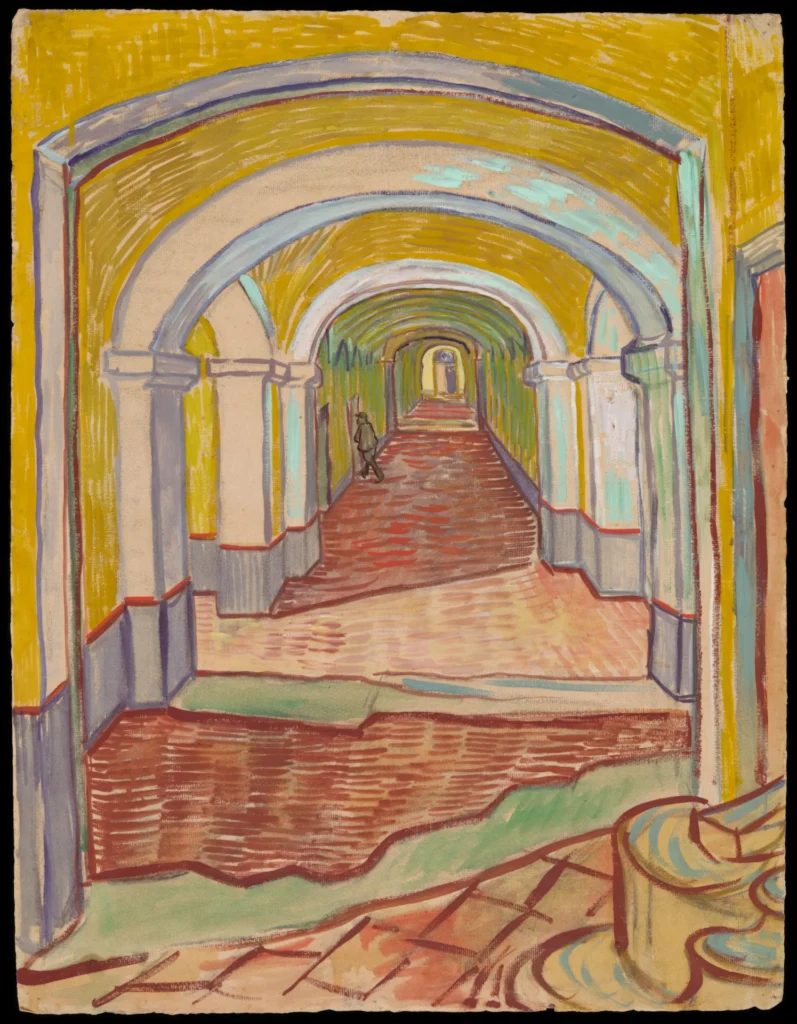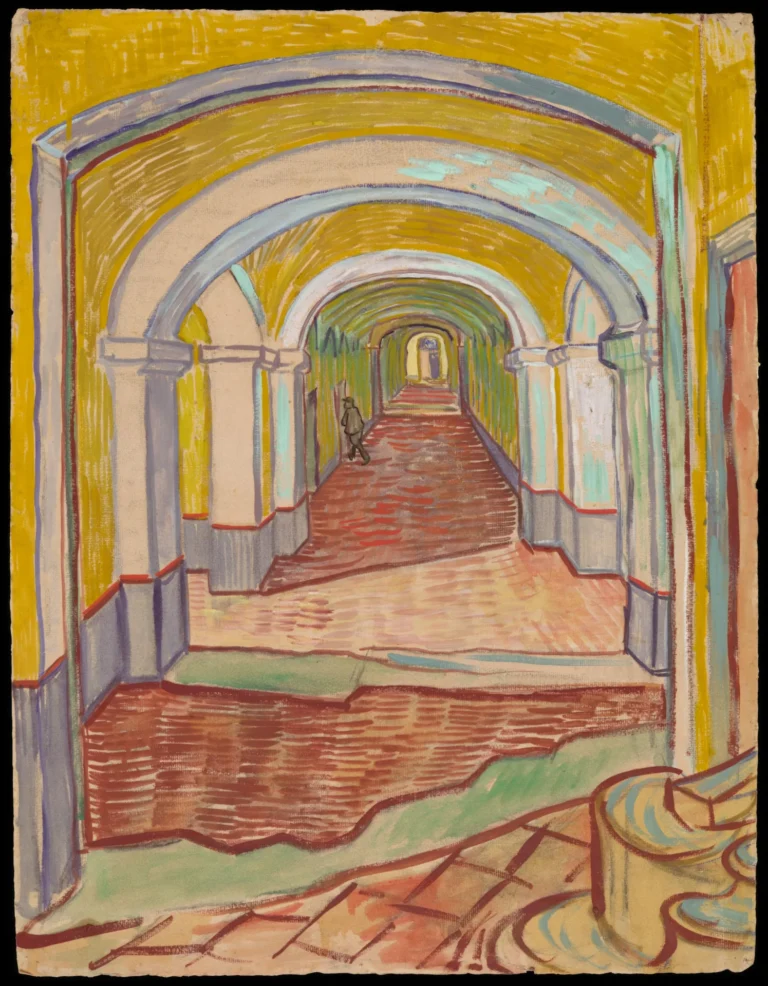Corridor In The Asylum (1889)
Vincent van Gogh's Corridor in the Asylum is a striking oil and chalk artwork that captures a deep and haunting corridor within the asylum where he was a patient. Created in September 1889, this piece combines Van Gogh's expressive use of color and perspective to evoke feelings of isolation and contemplation. The painting's small distant figure contributes to the intense atmosphere and serves as a reflection of the artist's own struggle with mental illness during a tumultuous period of his life. With its legacy and influence, this artwork is an essential part of Van Gogh's oeuvre and modern art history.
September 1889
About the Artwork
Painted during his turbulent stay at the asylum of Saint-Paul-de-Mausole, Corridor in the Asylum reflects Vincent van Gogh’s intricate relationship with his mental health. Arriving at the asylum in May 1889, Van Gogh immersed himself in creativity, generating over 2,100 works that absorbed the essence of his struggles and environment. This particular painting, completed in September 1889, showcases a stark corridor, blending the absurdity of isolation with the yearning for clarity that characterizes much of Van Gogh’s work. The small figure at the end of the corridor serves as a metaphor for the psychological distance and emotional battles faced by the artist, lending the piece a haunting and evocative quality. The work is a profound expression of his tumultuous inner life and his relentless pursuit of beauty amidst despair. As part of the Metropolitan Museum of Art collection, it continues to resonate with audiences, illuminating the path of an artist whose genius was often overshadowed by his personal struggles.
Did You Know
Vincent van Gogh voluntarily entered the asylum of Saint-Paul-de-Mausole after experiencing a series of mental health crises. His year-long stay allowed him to focus on his art, which resulted in some of his most notable works.
The small figure at the end of the corridor symbolizes Van Gogh’s sense of isolation and reflects the deeper themes of loneliness and introspection prevalent in his work during this period.
During his time at the asylum, Van Gogh created an astounding 2,100 works, including sketches and paintings, many of which are now celebrated masterpieces that highlight his unique style and emotional depth.










